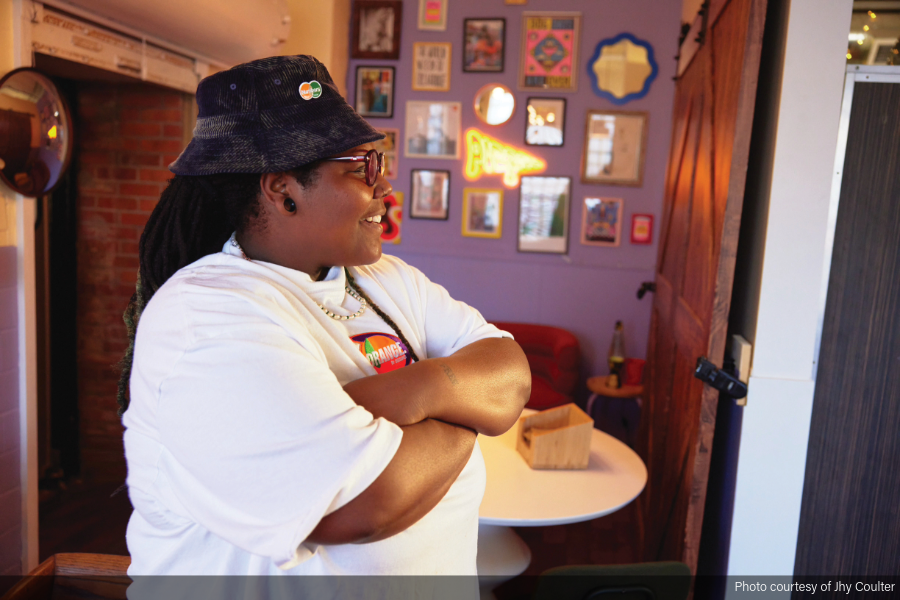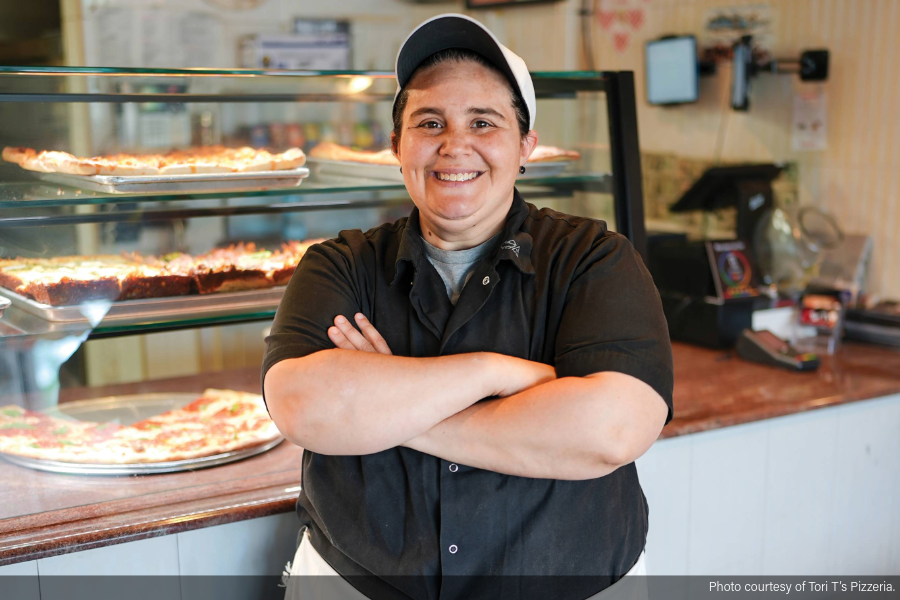100 Percent Sure

Tom Lehmann
Dough Expert
Q: I see that most of the dough recipes that you talk about are in percent rather than in weights. How do I go about converting the percentages into ingredient weights?
A: I get this question asked quite frequently so it never hurts to review it once again.
The easiest way to look at a dough is to look at it as a dough formulation based on baker’s percent. In doing so, the weight of each ingredient is expressed as a percentage of the weight of the total flour in the dough. So if a dough were made with 25 pounds of flour and the salt level was given as 1.75 percent, the weight of the salt would be 1.75 percent of 25 pounds (or 0.4375 pounds, which is seven ounces). Let’s go through a typical dough formulation based on percentages and convert it to ingredient weights:
Flour: 100 percent
Salt: 1.75 percent
Sugar: 2 percent
Olive oil: 1.5 percent
Instant dry yeast (IDY): 0.375 percent
Water: 58 percent
- Decide how much flour you want to use when making your dough. The amount of flour that you elect to use is always equal to 100 percent in the dough formulation. Remember that the ingredient weights will always be given in the same weight units (pounds, ounces, kilograms, grams, etc.) that you show the flour weight in.
- Let’s say that you opted to use 40 pounds of flour in your dough: Flour: 100 percent = 40 pounds.
 For the salt weight, using your calculator, enter the flour weight (40) and then press “X”. Enter 1.75 and then press the “%” key. Read the weight of salt in the display window. 0.7 pounds of salt is the correct answer. If you need to change this to ounces, just multiply 0.7 X 16 = 11.2.
For the salt weight, using your calculator, enter the flour weight (40) and then press “X”. Enter 1.75 and then press the “%” key. Read the weight of salt in the display window. 0.7 pounds of salt is the correct answer. If you need to change this to ounces, just multiply 0.7 X 16 = 11.2.- For the sugar weight, enter 40 then press “X” and enter 2. Press the “%” key and read 0.8 pounds in the display window. 0.8 X 16 = 12.8 ounces.
- For the olive oil weight enter 40 then press “X” and enter 1.5 then press the “%” key and read 0.6 pounds in the display window. 0.6 X 16 = 9.6 ounces.
- For the instant dry yeast, enter 40 X 0.375 then press the “%” key and read 0.15 pounds in the display window. 0.15 X 16 = 2.4 ounces.
- For the water weight, enter 40 x 58 then press the “%” key and read 23.2 pounds in the display window. This could also be read as 23 pounds plus (0.2 x 16 = 3.2 ounces) or a total of 23 pounds and 3.2 ounces.
The advantage of showing a dough formula in baker’s percent is that it allows the dough to be made using any desired flour weight and you can manipulate the size of the dough up or down while always keeping the dough ingredients in correct balance. Keep in mind though that when working in baker’s percent only weight units can be used. It will not work with volumetric measures such as cups, teaspoons, etc. It also provides for a very fast and easy way to look at any dough formula to see if any ingredients are used at an incorrect level for the type of dough/crust being made.
You can also easily convert any existing dough formula into baker’s percent by following these easy steps.
- Flour is always equal to 100 percent.
- Divide the weight of the ingredient by the weight of the flour and multiply by 100 to find the baker’s percent for any ingredient.Example: Assume that we are using 40 pounds of flour and want to increase the instant dry yeast level to 3.25 ounces. First change 40 pounds to ounces by multiplying by 16 = 640 ounces then divide 3.25 by 640 = 0.0050781 X 100 = 0.50 percent (rounded off from 0.50781).
- Do this for each ingredient and you will have your dough formula shown in baker’s percent.
In some cases I’ve seen what I call hybrid dough formulas in which ingredients are shown in both weight measures and volumetric portions. With formulas like these we must first convert the volumetric portions into weights before we can proceed with showing a formula in baker’s percent or changing it into baker’s percent. When you have any ingredients shown in volumetric portions all you need to do is to portion out the ingredient three separate times, collectively weigh the three portions and divide the weight by three. This will give you the weight measure for that volumetric portion that can be used when working your formula in baker’s percent.
Q: How do I know when my dough is properly mixed?
A: The amount of mixing a dough requires will depend upon the type of dough being made. For example, some cracker-crust doughs are made from a very “shaggy” type of dough that doesn’t come together like a normal dough that we are used to seeing. Instead, these doughs still contain a significant amount of dry flour when finished mixing and depend upon 24 to 48 hours of hydration time in the cooler to allow for full hydration of the flour/dough. For this type of dough, the total mixing time is usually two minutes or a little less.
Then there is the cracker-type dough made with a low dough absorption of 40 to 50 percent and mixed just until a tight, cohesive dough is formed in the mixing bowl. For this type of doughs the mixing time is typically 10 to 15 minutes at low speed. Lastly, we have the more traditional type doughs made with 55- to 65-percent absorption or more. This is the type of dough that most of us are used to working with and is the most commonly made pizza dough in the industry. Doughs of this type are generally best when under mixed as opposed to mixed to full gluten development. The best way to describe how this type of dough is mixed is to say that it should be mixed until the dough just begins to take on smooth, satiny appearance. If the dough is mixed beyond this point there will be undue wear and tear on your mixer. As the gluten continues to develop the dough can become more elastic making it more difficult to form into balls. Observation has shown that as the gluten is more fully developed in the mixer the finished crust will have a closer, more bread-like crumb structure that tends to exhibit tougher, chewier eating characteristics.
Regardless of the type of dough you’re making, it is better to err in favor of an under-mixed dough to start with and increase mixing time only to alleviate stickiness when scaling and balling the dough pieces.
Tom Lehmann is a former director at the American Institute of Baking in Manhattan, Kansas and Pizza Today’s resident dough expert.

 For the salt weight, using your calculator, enter the flour weight (40) and then press “X”. Enter 1.75 and then press the “%” key. Read the weight of salt in the display window. 0.7 pounds of salt is the correct answer. If you need to change this to ounces, just multiply 0.7 X 16 = 11.2.
For the salt weight, using your calculator, enter the flour weight (40) and then press “X”. Enter 1.75 and then press the “%” key. Read the weight of salt in the display window. 0.7 pounds of salt is the correct answer. If you need to change this to ounces, just multiply 0.7 X 16 = 11.2.




